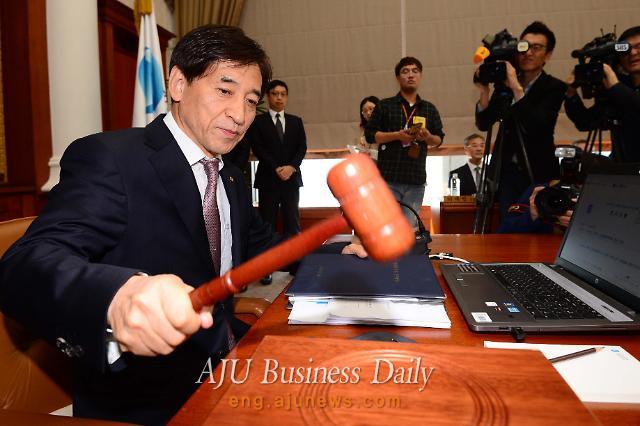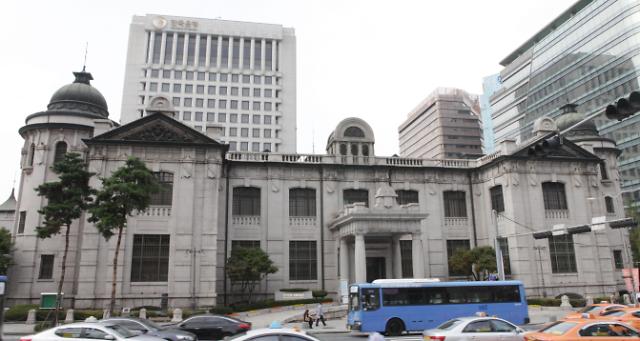
In an unexpected move, South Korea's central bank slashed the base rate by 0.25 percentage point to a record low of 1.75 percent on Thursday in an effort to bolster growth momentum.
The additional rate cut comes as the country's economy has shown few signs of recovery despite two rounds of rate cuts in the second half of last year and the government's stimulus measures.
The Bank of Korea's (BOK) Monetary Policy Committee decided to cut the benchmark interest rate as "both growth and consumer inflation rate are expected to be lower than expected," BOK Governor Lee Ju-yeol told reporters following a meeting of the committee.
The central bank lowered the base rate by 0.25 percentage point each in August and October 2014.
Following is the full text of a statement the BOK issued after the committee meeting.
"The Monetary Policy Committee decided today to lower the base rate by 25 basis points, from 2.00 percent to 1.75 percent.
"Based on currently available information, the committee considers that, although the trend of a solid economic recovery in the United States has been sustained and improvements, albeit modest, have also continued in the euro area, economic growth in emerging market countries, including China, has slowed. The committee forecasts that the global economy will sustain its modest recovery going forward, centering around advanced economies such as the United States, but judges that the possibility exists of its being affected by changes in the monetary policies of major countries, by the weakening of economic growth in emerging market countries, and by geopolitical risks.
"Looking at the Korean economy, the committee notes that exports have decreased, due mostly to declines in the unit prices for example of petroleum products, that domestic demand activities such as private consumption and facilities investment have exhibited sluggish movements, and that the sentiments of economic agents have also not clearly recovered. On the employment front, the number of persons employed has expanded steadily, led by increases in the 50-and-above age group and in the service sector. The committee expects that the domestic economy will show a modest trend of recovery going forward, although falling short of the originally forecast growth path. The period of continuation of the negative output gap will as a result also be longer than had been anticipated.
"Consumer price inflation fell from 0.8 percent the month before to 0.5 percent in February, owing mainly to increases in the extents of decline in petroleum product prices and to the slower paces of increase in prices of industrial products other than petroleum. Core inflation excluding agricultural and petroleum product prices fell slightly to 2.3 percent from 2.4 percent in January. Looking ahead, the committee forecasts that, due mainly to the effects of the low oil prices, inflation will continue at a level lower than originally expected. In the housing market, the upward trends of sales prices accelerated slightly, while leasehold deposit prices continued their uptrend centering around Seoul and its surrounding areas.
"In the domestic financial markets, after having risen on foreigners’ net buying of domestic stocks for example, stock prices have recently fallen under the influence mostly of declines in stock prices in major countries. The Korean won has depreciated against the U.S. dollar, affected by the dollar’s strength globally and by the synchronization between movements of the won and the Japanese yen following the yen’s weakening, while it has fluctuated within a certain range against the yen. Long-term market interest rates had risen, but have since declined. Bank household lending has sustained its trend of increase at a level greatly exceeding that of recent years, led by mortgage loans.
"Looking ahead, while supporting the recovery of economic growth the committee will conduct monetary policy so as to maintain price stability over a medium-term horizon and pay attention to financial stability. In this process, it will closely monitor external risk factors such as international oil prices and shifts in major countries’ monetary policies, as well as developments related to the spare capacity in the domestic economy and the trends of household debt and capital flows."




